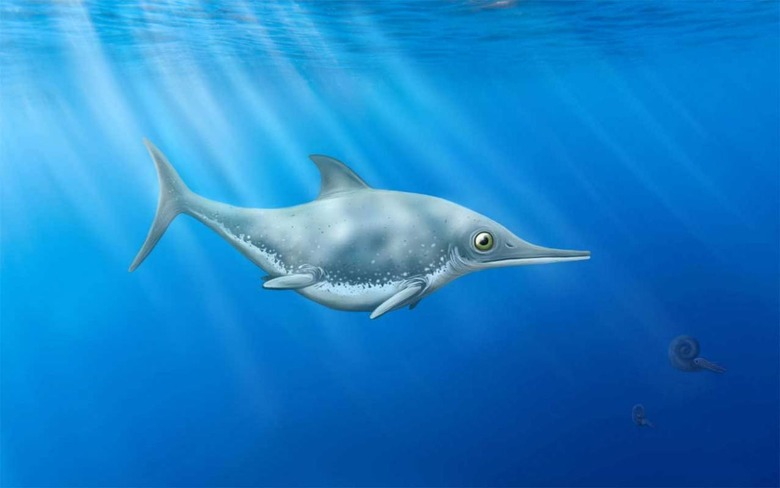Prehistoric "Sea Dragon" Fossil Discovered In The English Channel
Researchers discovered a new prehistoric sea creature nicknamed the "Sea Dragon" and officially named the Thalassodraco etchesi. The small marine reptile lived 150 million years ago during the Late Jurassic era and appears to be evolved to dive to extreme depths. The fossilized creature was discovered in the Late Jurassic deep marine deposit along the English Channel coastline in Dorset, England.The creature is part of the group known as ichthyosaurs. That group of creatures are streamlined marine predators. The recently discovered sample has several differences making it unique enough to be its genus and species. This particular specimen was discovered in 2009 and is believed to have been about six feet long.
Steve Etches discovered it along the coastline after a cliff collapsed. Scientists say it appears to have some similarities to sperm wells with an extremely deep rib cage that may have allowed for larger lungs and more space for internal organs. More space for internal organs could've kept them from being crushed under pressure from diving deep into the sea.

The creature also had very large eyes allowing it to see well in low light conditions. Its mouth is lined with hundreds of tiny teeth, indicating it likely ate a diet of squid and small fish. Its teeth are unique in that they are completely smooth. The creature breathed air at the surface and didn't have scales.
Much about these creatures is a mystery. Little is actually known about the biology of the animals. Scientists are only able to make assumptions based on fossils discovered because nothing similar lives today. Hopefully, additional research in the future sheds more light on these ancient creatures.
